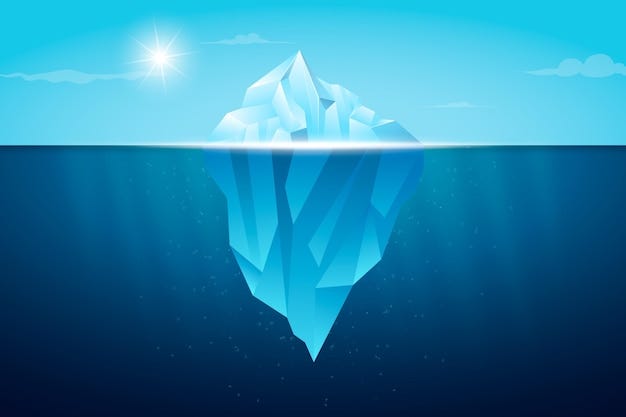Design is an Iceberg
If design is the bridge between functionality and aesthetics, then design can be viewed as an optimization problem.
In this article, we’ll examine the information that designers need to build that bridge in such a way that makes the crossing as smooth as possible?
When we look at the quality and effectiveness of various design options, we naturally rely on heuristics to guide us… is it intuitive to use? Is it appealing? Does it solve the problem? Does it support the actions we want our users to take? Is it feasible to build? The judgements are mostly subjective, filtered through our own biases and perceptions of what we see.
In that sense, design is like an iceberg. As a metaphor, the iceberg helps explain how we often only see a fraction of the thing we believe we’re seeing. Design’s raison d’être is to hide that complexity with simplicity in a way that people will both understand and use.
One of the big reasons design is so critical to technology is to simplify the zeros and ones that lie underneath, beneath the waterline — what engineers refer to as “under the covers.”
Part of the challenge with designing great technology is collaborating with engineers who spend most of their time under the waterline. They do that for good reason; to build great technology. On the flip side, designers are happily coasting above the water, zig zagging, with little visibility to what lies beneath. For engineers and product people, the result all too often is blindness to how people above the waterline actually experience what they’ve spent months working on. For designers, it’s another kind of blindness, one of technical feasibility and understanding.



